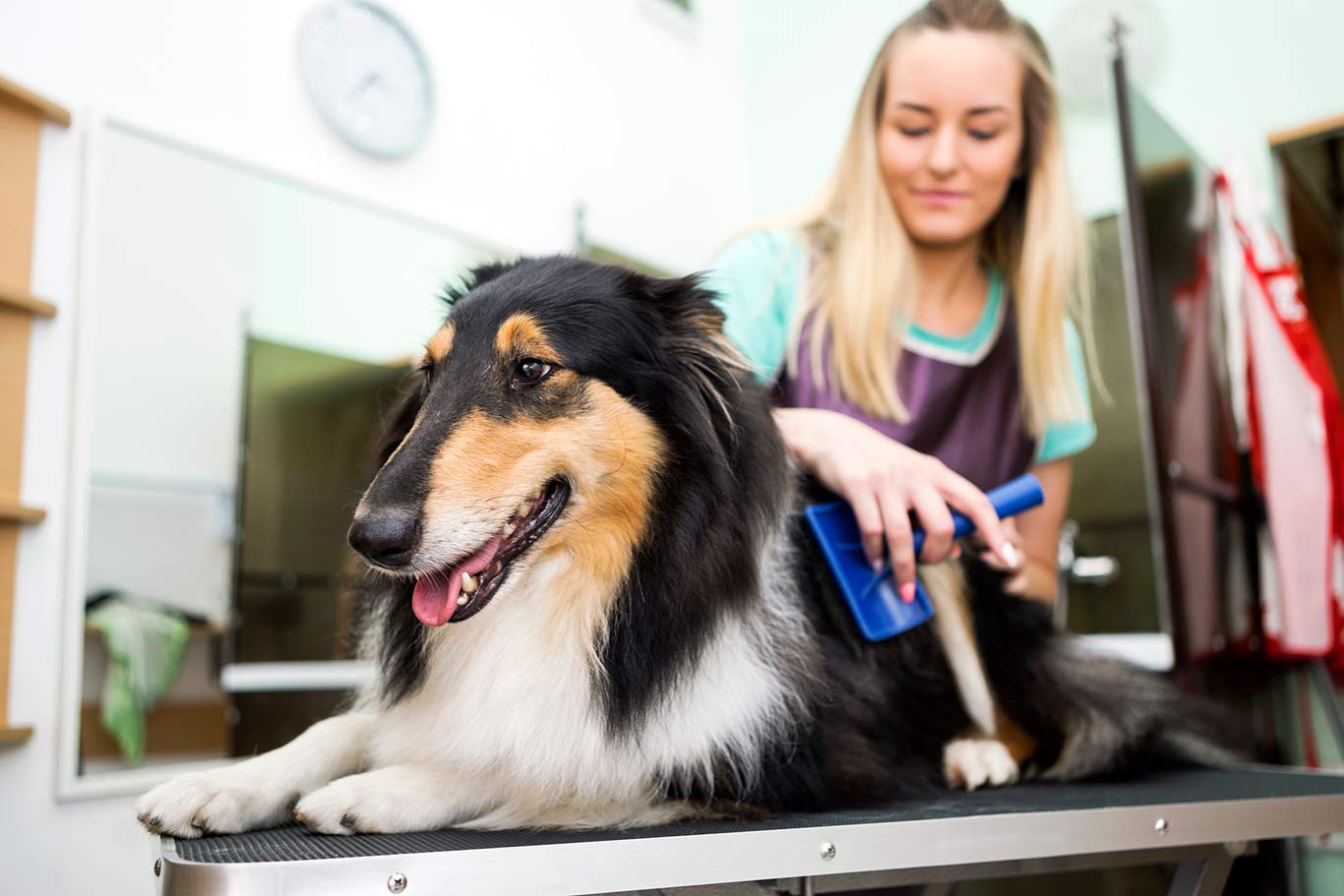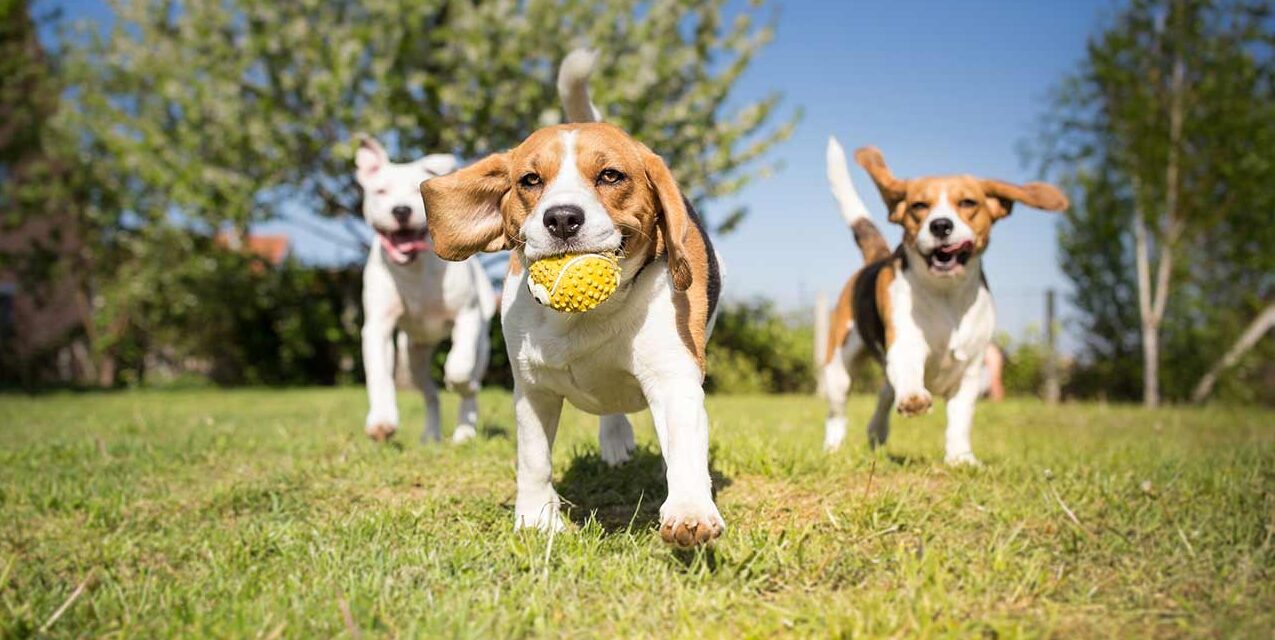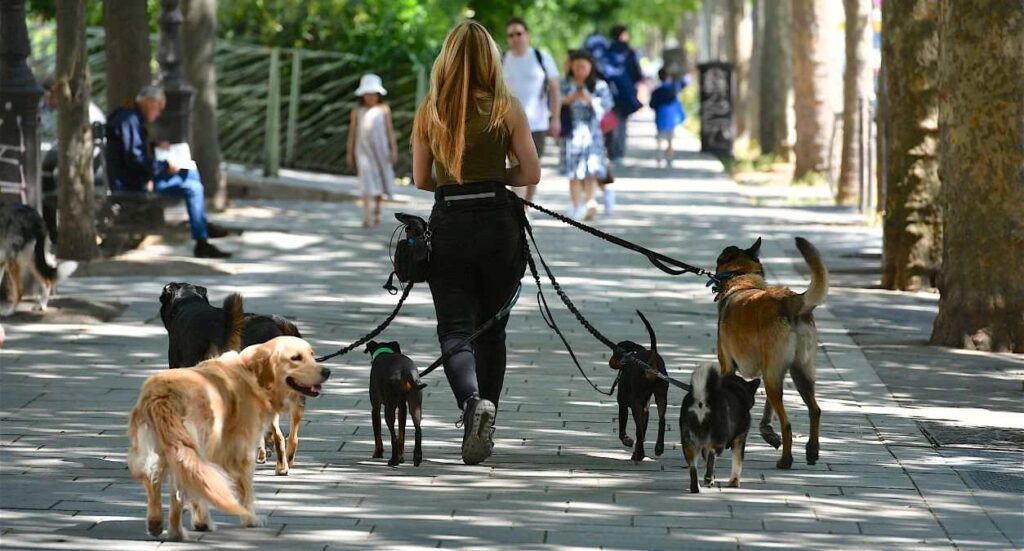Britain’s beloved dogs are feeling the pinch – and so are their owners. With “dogflation”, the inflation rate of dog-related expense, from Dogs Trust, hitting 9% in early 2024 (more than double the general UK inflation rate of 4%), caring for a canine has become a serious financial commitment affecting professionals and pet owners alike.
Dog ownership in the UK has boomed, with about one-third of households now owning a dog. But between 2020 and 2024, the cost of keeping a canine companion has surged due to pandemic-era demand, inflationary pressures, and rising business overheads.
Caring for a dog now costs the average owner around £850 per year (for a medium sized dog), pushing the estimated lifetime cost of a large dog to over £15,700.
Below, we break down the rising costs in two key areas: (1) Professional dog handler services (grooming, walking, training, sitting, boarding) and (2) Costs borne by owners (veterinary care, insurance, food, dog care services etc.), followed by a look at regional cost differences across the UK.
Rising costs for professional dog services
Increase business overheads
From dog walkers to boarding kennel operators, professionals across the UK have seen sharp rises in operational costs – often with little room to absorb them.
Energy bills
Energy costs have been another major concern. Grooming salons, doggy daycares, and boarding kennels all rely heavily on gas and electricity. By late 2022, UK energy prices had surged, with gas rising by around 129% and electricity by 66% compared to 2020 levels. Although prices have moderated somewhat by 2024, they remain higher than pre-2022 levels and are still vulnerable to global market shifts.
Rebecca Duguid from Premier Dog Grooming shares how these increases have directly impacted pricing:
“Rising energy bills are a constant battle for our business. We’ve had to implement a small price increase each year for the last 3–4 years just to keep up with the soaring costs—without any help, relief or funding from energy companies or government schemes.”
To combat this, some businesses have invested in energy-saving upgrades. Rebecca explains:
“We’ve switched from an electric shower and stainless-steel bath to a hydrobath system, which saves both water and energy. We’ve also upgraded all lighting to energy-efficient LED lights with motion sensors. We do everything we can to be energy efficient while still operating a busy commercial salon.”
Labour and wages
For dog care businesses that employ staff, such as daycares, grooming salons, or kennels, rising wages have been another significant factor. The National Minimum Wage rose to £11.44/hour in April 2025. For staff-heavy businesses, this has meant substantially higher payroll costs.
Rebecca comments:
“With the recent rise in minimum wage, staff payroll has become our biggest business expense. We now have to work harder to cover these costs or reduce staff hours to keep the business cost-effective—which, of course, can limit availability and impact our overall earnings.”
Equipment and supplies
Costs for shampoo, clippers, and training equipment have all risen. Higher expectations from clients have also pushed professionals to invest in better-quality (and often imported) tools.
Rebecca elaborates:
“We’ve seen clear increases in the cost of tools, products and equipment. That said, we choose to use high-end, top-quality products because we’re committed to offering premium services to our clientele. These costs are expected and absorbed as part of maintaining our standards.”
And it’s not just tools—expectations have driven further investment:
“Our clients know we provide a high-quality, professional service, and they trust us to use the best products and tools. We constantly invest in training and qualifications to ensure we’re giving the best care possible. Clients appreciate that, and our social media helps keep them informed about the value they’re receiving—our pricing reflects that quality.”
Insurance & licensing
While some businesses feel regulatory costs are a financial burden, others see them as a standard part of operating.
Rebecca’s take:
“These are essential costs when running a pet care business. We don’t see them as a large burden—we simply couldn’t operate legally without them. Our insurance through Protectivity has been reliable for eight years and remains reasonably priced.”
General perception of costs
Rising backend expenses—energy, wages, equipment—naturally influence service pricing. But do clients understand this?
Rebecca believes many do:
“From what our clients say, they absolutely understand how tough it is to run a pet business in today’s climate. Everyone is feeling the cost-of-living increases—not just in dog grooming. Our prices may not suit everyone’s budget now, and we accept that. Every pet owner has different needs, and there’s a groomer for every client. We are so grateful for the loyalty our clients continue to show us year after year.”
Liability and claims risks
Running a professional dog care business comes with a host of legal and financial responsibilities. From licensing requirements to insurance coverage, the risks associated with dog handling are significant – and getting it wrong can have costly consequences.
Insurance and claim trends
Professional dog carers are legally and ethically expected to hold appropriate insurance, including public liability, pet business insurance. As with most sectors, premiums have risen with inflation, and these higher costs often result in increased prices for customers.
Claims research from Protectivity in 2023–2024
Key findings
- Dog care activities with the most claims.
- Highest paying claims.
- The most common incidents leading to claims.
Our claims data shows the dog care activities with the highest volume of insurance claims were:
- Dog walking – 39%
- Dog grooming – 27%
- Boarding and kennels – 10%
- Dog sitting – 7%
- Dog training and behaviourists – 2%
- Other activities – 15%
Although dog walking had the highest number of claims overall, largely due to its frequency and the risks associated with public spaces, dog boarding and grooming led to the most expensive claims, with the highest grooming-related claim exceeding £12,000 during this period.
Common incidents leading to claims
- Injuries from fights or other dogs – Many claims involve dogs being bitten or injured during interactions with other dogs, particularly in boarding, daycare, or walking scenarios. These often result in high vet bills and liability costs.
- Ingestion of dangerous substances or items – Dogs frequently consume harmful or foreign items—such as grapes, chocolate, onions, sticks, or even clothing—which can require induced vomiting or emergency care. These incidents are common in sitting, boarding, and walking settings.
- Accidental injuries during walks or play – Claims include broken legs, fractures, and cuts from barbed wire, sticks, or fences—mostly occurring during outdoor walks or exercise. These can be sudden, costly, and difficult to prevent without proper control.
- Grooming injuries – A significant volume of claims stems from accidental cuts during grooming. These range from nicks to more serious lacerations affecting ears, tongues, paws, and other sensitive areas.
- Lost or escaped dogs – Dogs escaping through unsecured gates, doors, or fields can lead to claims involving search efforts and subsequent accidents that result in costly vet bills.
- Personal accidents to handlers – Handlers themselves are at risk, with claims involving dislocated shoulders, broken bones, or surgeries due to being pulled by dogs. These often result in time off work and loss of earnings.
- Property damage – Incidents also include broken phones, damaged grooming equipment, lost keys, and destruction of client property, adding to overall claims volume.
Claims research shows that the highest-cost claims typically involve severe accidents, especially dog-on-dog injuries and ingestion of harmful items, where vet bills can run into the tens of thousands. These are not only expensive but also emotionally distressing for all involved.
Most claims fall under Care, Custody, and Control (CCC) liability, where the handler is responsible for the dog’s welfare and actions. A recurring theme is poor hazard control, including unsecured environments (e.g., open gates, off-lead dogs, or barbed wire) and grooming areas lacking proper safety measures. These incidents are largely human error, including walking dogs off-lead without consent or leaving access points unsecured.
By being aware of these high-risk scenarios and proactively putting controls and protocols in place, dog care professionals can reduce the likelihood of costly incidents, protecting both their business and the dogs in their care.
Legal and regulatory responsibilities
Dog care professionals must of course operate within the law, and non-compliance can lead to serious financial penalties. Further to this, failing to be properly regulated or licensed can invalidate insurance policies, leaving businesses exposed in the event of a claim. Whilst not officially regulated there are dog walking laws and dog grooming laws that dog care professionals will need to follow.
Key penalties under the Control of Dogs Order 1992 include:
- Transporting dogs without proper restraint: up to £5,000
- Allowing dogs in public without a collar and ID tag: up to £5,000
- Dogs dangerously out of control in public: up to £5,000
- Failing to pick up dog fouling in public areas: £100–£1,000
Some local authorities have also significantly raised licensing fees, for example, a council in North Yorkshire reportedly increased dog boarding licence fees by 500%, adding to the financial strain on small businesses.
Rising costs for dog owners
Dog owners across the UK are really starting to feel the pressure, with nearly every part of pet care becoming more expensive between 2022 and 2024. From vet bills and insurance premiums to food, grooming, and everyday supplies, the costs of keeping a dog have noticeably gone up.
Recent data shows that 90% of owners say pet ownership has become more expensive, and over a quarter (26%) admit the rising cost of living is directly impacting how they care for their pets. In response, around 35% of owners have adjusted manage costs, whether that means cutting back on personal luxuries, tightening household spending, or rethinking how they access pet services. Even the hidden or unexpected costs of owning a dog are becoming harder for many to absorb.
Veterinary care
Veterinary costs have risen sharply in recent years, with prices increasing faster than many other services – including private healthcare for humans. As of February 2024, inflation for veterinary services was running at 10.7%, compared to the general UK inflation rate of 3.8%. This followed a peak of 13.1% in June 2023 for pet services overall, even as broader inflation was beginning to ease.
Routine treatments haven’t been spared. The average cost of annual booster injections climbed from £41.78 in January 2020 to £62 by February 2024, a 48.4% increase, more than double the rate of general inflation. Prices now vary widely too, ranging from £23 to £107 depending on the provider.
More complex care is even harder on the wallet. Procedures like cruciate ligament repair can set owners back £3,000 to £5,000, while surgeries for fractures or internal issues often cost thousands. Diagnostic tools such as MRI scans have also become more expensive, partly due to rising overheads at veterinary practices and the high-tech equipment involved.
Pet Insurance
As a consequence of rising vet bills pet owners feel obligated to invest in pet insurance, often opting for lifetime cover. However, many may not appreciate that making a claim leads to higher premiums later on.
Insurance premiums for pet insurance rose by 4% in 2023, averaging £389/year. Premiums reflect higher vet costs and an increase in claims. Older dogs and certain breeds saw steeper hikes. Some insurers also raised excess fees. Insurers processed 1.8 million claims in 2023, the highest on record.
Food and pet supplies
Pet food prices jumped, with inflation peaking at 15% in 2023. Feeding costs have climbed due to supply issues and ingredient costs. Premium brands also rose more sharply. In some cases, owners have turned to cheaper alternatives or food banks.
Unexpected costs
It’s not just the obvious expenses catching dog owners off guard. While it only applies to some, post-Brexit pet travel to the EU now requires documentation that adds over £100 per trip.
However, more common for some, dog behavioural issues post-lockdown also prompted expensive training. Some owners faced legal liability or insurance needs due to behavioural incidents.
Rehoming pressures
Sadly, the financial strain has led to a spike in people giving up their pets. In 2023, Dogs Trust received more than 45,000 handover requests, more than double the number in 2022. The most common reason? Owners simply couldn’t afford to keep their dogs. In response, charities have stepped in, expanding support through pet food banks, low-cost vet clinics, and behaviour support services.
Regional cost differences
The amount dog owners pay for care services across the UK can vary quite a bit depending on where they live. In London, for example, prices are at the higher end of the scale. Dog day care costs between £50 and £60 per day, and overnight boarding can be as much as £70. A full grooming session in the capital might set owners back up to £150. These high prices reflect not only strong demand but also the higher overheads that come with running a business in a busy, expensive city, things like rent, wages, and limited-service availability.
In other major cities like Manchester, Bristol, and Southampton, prices are a little more moderate, but still far from cheap. In Manchester, daycare typically costs £30 to £35 per day, while boarding tends to be around £28 to £32 per night. Dog grooming costs in these areas usually comes in at about £50. Owners in these regions might have access to a broader range of price points, as local providers try to strike a balance between affordability and rising operational expenses, such as fuel, utilities, and staffing.
Head further into Scotland and Wales, in cities like Edinburgh or Cardiff, and you’ll generally find slightly lower prices. Daycare can start from around £25, and grooming averages closer to £45. But even at these lower price points, costs still reflect ongoing inflation and the unique challenges of running pet care services in less densely populated areas, like longer travel routes and fewer clients per day.
In the end, what businesses charge comes down to a mix of local demand, cost of living, and competition. For dog owners, that means weighing up not just the price tag, but also availability, reliability, and the quality of care when choosing the right service for their pet.
Demand remains strong regardless or price rises
Despite the mounting financial pressures across the dog care industry, one fact stands out: demand hasn’t declined. The UK’s dog population continues to grow, and for both pet owners and professionals, the bond between people and their pets remains a powerful force that often outweighs economic concerns.
For pet care businesses, rising costs across fuel, wages, energy, insurance, and licensing have made price increases unavoidable. But crucially, many of these services exhibit what economists call “inelastic demand” – meaning that even when prices rise, usage stays relatively stable. This is especially true among working households who depend on reliable dog walking, grooming, sitting, or daycare services to balance their routines.
In London, for example, dog daycare is in such high demand that some owners continue to pay for their dog’s place even while their pet is recovering from surgery, simply to avoid losing the spot.
Still, the resilience of this sector is clear. With 25% of dog owners using grooming services monthly, and a growing reliance on walkers and sitters, dog care has become deeply embedded in modern life. While both professionals and owners would welcome greater cost stability, the strength of demand continues to carry the sector forward – even in the face of rising prices.
Sources:
Data has been taken from recent UK media reports, industry surveys, and official data on pet care costs including: dogstrust.org.uk, assets.publishing.service.gov.uk, Association of British Insurers abi.org.uk, globalpetindustry.com, dogster.com, Analysis by Dogs Trust/Oxford Economics, Competition & Markets Authority. https://www.pdsa.org.uk/, ONS – Veterinary prices, Rover – Dog care service prices (May 2025), The Times, The Huddersfield hub
Get Pet Business Insurance from Protectivity

*Disclaimer – This blog has been created as general information and should not be taken as advice. Make sure you have the correct level of insurance for your requirements and always review policy documentation. Information is factually accurate at the time of publishing but may have become out of date.
Last updated by
















